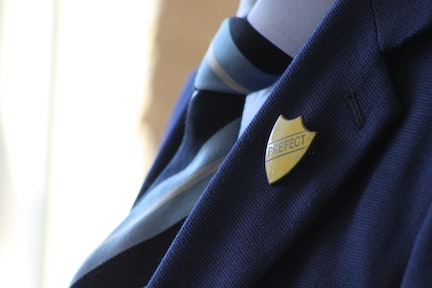EDUCATION COSTS PARENTS – TYPICALLY AT LEAST £39 PER WEEK FOR SECONDARY SCHOOL KIDS, £19 FOR PRIMARY

Parents typically need to find at least £39 per week for a child’s secondary school education and £19 for a primary-aged child, research for Child Poverty Action Group (CPAG) finds.
Although education is free at the point of access, in reality, the cost of uniforms, learning materials, school trips, packed lunches and transport sets most parents back at least £39.01 per week, per secondary school child and £18.69 per primary child.
The findings are based on the Minimum Income Standard (MIS) research programme which since 2008 has set out what the public thinks is needed for a minimum socially acceptable living standard in the UK. Focusing on education, researchers costed up what parents who took part in focus groups between 2012 and 2022 agree children and their families need specifically to meet children’s minimum educational needs.
Excluding before and after-school childcare and household costs like printers, the research found the annual price tag for going to secondary school is £1,755.97 per child and £864.87 for a primary school child. That’s £18,345.85 for children to go through all 14 years of school.
UK annual school costs per child:
| Primary SchoolAnnual costs | Secondary school Annual costs | ||||
| Learning | £0 | £279.76 | |||
| Uniform, kit, shoes and bags[1] | £352.86 | £481.77 | |||
| Packed lunches[2] | £347.85 | £349.64 | |||
| Transport | £0[3] | £487.54 | |||
| Enrichment e.g., trips and celebrations | £164.16 | £157.26 | |||
| Total | £864.87 | £1755.97 | |||
| Childcare (urban UK) | £5031.92 | £0 | |||
| Household costs e.g., laptops and printer[4] | £93.15 | £93.15 |
[1] The most recent MIS focus groups with parents were carried out in 2022, meaning the effects of the new uniform bill which requires schools to observe statutory guidance on uniform costs in England will not necessarily have been captured in the research given the time taken to implement new policies.
2 In research discussions, although many parents highlighted the benefits of hot school lunches and agreed these would be optimal, the groups concluded that a homemade packed lunch each day was sufficient as a minimum and meant parents can make sure they are giving their children something they like to eat. In this briefing, the costs outlined under ‘packed lunches’ also include the cost of a lunch box and water bottle.
3 This is based on the assumption that it is more likely that primary school children can walk to school, and where this isn’t possible, the cost of this travel would be covered by the family’s motoring budget, not the education budget. As there are fewer secondary schools, secondary school pupils are more likely to have to travel further to reach their school, so the cost of a daily bus fare is included as a minimum.
4 Parents and careers in focus groups agreed children need access to technology at home, but these items can be shared between family members meaning the cost differs depending on household size. This is therefore an indicative cost, assuming the items are just being used by one child.
Uniform – including PE kit and school bags, costs the most for parents of primary kids and comes second only to transport costs for secondary school children. Food – with the minimum defined as a packed lunch – is the second biggest cost for parents of primary kids and is also a major weekly cost for secondary school families.
Parents of secondary school children need £279.76 per year for learning resources (including a phone, calculator, pencil case, textbooks, revision guides, set texts and sometimes subject-specific resources such as ingredients and aprons for food and nutrition lessons, and contributions to materials for Design and Technology). Essential trips and school activities set parents back about £160 per child per year.
While some families on the lowest incomes might get help with school costs, the support available varies across the nations – so it matters where you live. Eligible low-income parents of primary children in England are paying nearly double (£30.85 per week) what equivalent families in Scotland pay (£16.46) for their children’s education for example. And for some parents of secondary school children, the outlay in Scotland is around 1/4 less (£59.78 per week) than families in all other nations (£78.03 per week).
Child Poverty Action Group calls on all Governments across the UK to ensure all children have as a minimum:
- Access to affordable school uniforms with support available to those that need it.
- Access to a free hot, balanced meal as part of the school day.
- The opportunity to attend school residentials and all school trips that enhance learning, with no one missing out due to cost.
- Access to free transport so that all children can get to and from school every day.
- Access to a free curriculum with no hidden subject-related costs or charges.
Head of CPAG’s Cost of the School Day programme Kate Anstey said:
“Parents are guilt-stricken when their kids are left out at school but when you can’t cover the electricity bill, how is a new PE kit affordable? Our research shows there’s a hefty and often hidden price tag for just the basic essentials needed for school. For struggling families, it can feel more like pay-as-you-go than universal education. It’s on each national government to intervene and ensure that every child has at the very least the essentials required to take part in school and learn. Without that intervention, the very idea of universal education and equal life chances for children is undermined.”
Many schools do what they can to help families with costs, but CPAG’s Cost of the School Day programme which has worked with 55 schools, over 2,000 parents and carers and over 12,000 children, finds parents having to go to great lengths to prevent their kids from missing out at school.
Parents told the programme:
“Yes, I have had to put other payments on hold to pay the school.”
“I cannot always afford these costs and have to ask family for money.”
“The school uniform is too expensive and is a monopoly. Only one place to buy and far away. With the cost of living going up parents should have more options. Why can’t the girls wear any navy blue skirt or trousers (why does the logo have to be on it)? Why do the shirts have to be v shape? Why can’t the PE kit be more flexible too (plain navy or black leggings). I understand children need a uniform but the uniform policy is far too strict and expensive when it does not have to be. More flexibility would help lower the costs.”
“Yes there have been occasions when I couldn’t afford for either of them to have dinner money so they have to bring snacks from home or go without”
“Bus pass is the major expense, it shouldn’t cost so much to send your child to school.”

